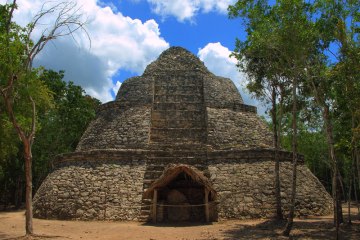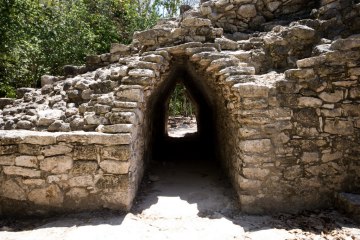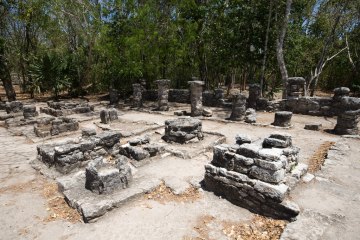About 45 minutes west of Tulum hidden in the jungle next to several large lakes are the very impressive ruins of Coba. While still relatively close to the Cancun-Tulum corridor, the modern village of Coba still has an “Old Mexico” feel to it. It’s a place where Mayan rather than Spanish is considered the first language.
Due in large part to its location between Tulum and Chichen Itza and its abundant water supply, at its height, from about 400-800 A.D., Coba was a trading center with a population of over 55,000. While restoration is now an ongoing process, less than 10% of the ancient city has currently been reconstructed. It is an excellent trip for those seeking a site that does not attract as many visitors as some other better-known ruins and for those wanting to see a site before restoration has progressed very far.
Perhaps the most impressive structure in Coba is Nohoch Mul. At 136 feet it is the tallest pyramid in the Yucatan. Among other restored structures are two beautiful small ball courts, a nice example of a Mayan archway and a second pyramid. This smaller pyramid, seen in the top photo above, is situated at an important crossroads of ancient trading routes, and looks out over some still impressive remnants of the sacbeob, the Mayan white stone road system.
On our most recent trip there, the entrance fee was $30 pesos per person and the optional services an English speaking guide for 1-1/2 hours for a group of 4 was an additional $350 pesos.
On the drive to Coba, you will pass the Grand Cenote, which presents an excellent opportunity to snorkel. Also keep your eye out for a small shop along side the road selling plaster reproductions of artifacts found in ruins form all over Mexico.



